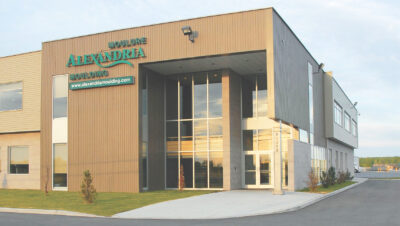Quebec Business Trends 2025 – Cautious Optimism Underscores Quebec Market
Business in the hardwood industry was reported as slower on all fronts this past summer and early fall due to uncertainty in domestic and export markets, and the ongoing Trump tariff war. Certain species were not in enough demand to absorb the already limited quantities entering the market. Contacts noted that price increases were supply driven.
White Oak is selling well. Green and kiln-dried supplies are in balance with demand. Export sales for some contacts were stronger in June than compared to last year. – Canadian lumbermen
Demand for the regionally important Hard Maple is reported as being good, with some scarcity in logs depending on areas contacted, with some difficulty in procuring green lumber. No. 1 Common grade leads on kiln-dried sales, with color playing a role in better sales.
Cabinet manufacturers, millwork, moulding, and furniture businesses are taking up most of the grades and thicknesses of Soft Maple, which are noted as moving well. Demand, it is commented, is better for Sap and Better stock than for Unselected. Soft Maple that is brown in color are weak sellers.
Ash production is not meeting market needs for certain grades and thicknesses. Demand from China and domestic buyers for kiln-dried Ash are somewhat slow.
Basswood sales to end users are reported as good here, but south of the border in the Appalachian region this is not the case.
As the largest importer of Cherry, China is not purchasing as much of this species and production has been reduced.
Developing production is meeting current demand for Hickory. The lower grades of this species are moving to residential flooring manufacturing plants.
Poplar is selling well to the millwork sector, however, prices are rising slightly. There is good demand for kiln-dried FAS and No. 1 Common. Supply is in line with market needs.
Depending on regions contacted, some sawmills are avoiding Red Oak, while others are still providing it, and for others supply is ample to meet needs or that it is in tight supply. Some flooring manufacturers are bolstering their No. 2A and 3A Red Oak as sales have picked up since the July construction break. Exports are still low due to the US-China tariff war going on, with some exporters noting their shipments, while others are not. Supplies are also reported as insufficient to meet market needs for green Red Oak.
Contacts reported that White Oak is selling well. Green and kiln-dried supplies are in balance with demand. Export sales for some contacts were stronger in June than compared to last year.
Walnut logs, contacts noted, are selling to China, and this is causing a higher profit than if they were sawing grade lumber.
It was noted that furniture manufacturers have shifted to composite wood products, rather than purchasing framestock.
The Quebec government is facing backlash over a proposed forestry reform bill, prompting tensions between Indigenous protesters and forestry workers, including blockades that disrupted operations. In response, Indigenous Affairs Minister Ian Lafrenière and Natural Resources Minister Maïté Blanchette Vézina are trying to find solutions and defuse rising tension, and find common ground, in a renewed promise to modify the proposed legislation following meetings in mid-August with Indigenous leaders and industry representatives.
The bill, tabled in Quebec legislature in spring, aims to protect communities dependent on the commercial forest industry. It proposes zoning public forests into areas designated for conservation, multi-purpose use, or forestry. According to the bill, actions that “restrict the carrying out of forest development activities” would be prohibited in the forestry zones, as would conservation measures.
The ministers argue that the bill must protect forest-dependent communities. Blanchette Vézina also suggested she’s willing to give First Nations more say over which areas should be open to forestry, stating that the way consultations were conducted needed to be reviewed. The bill aims to reserve 30 percent of forest land for conservation, down from the current full-use model.
The MAMU First Nation, which describes itself as a group of hereditary chiefs and land defenders, began setting up blockades of forestry roads in the province in protest. The Atikamekw Nation, say the bill infringes on Indigenous rights and amounts to land privatization. They are demanding the zoning model be scrapped in favor of a co-management system that includes First Nations and land-use decisions. Blockades and confrontations erupted, escalating tensions.
While the government expressed openness to modifications and better consultations through ongoing talks, Indigenous leaders remained skeptical, but firm in their opposition, warning that the current proposal prioritizes exploitation over stewardship.
The ministers, local officials and Indigenous leaders acknowledge the urgency to de-escalate before tensions worsen further.








